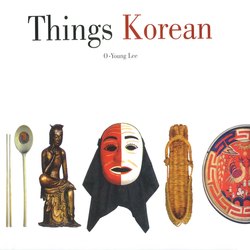Читать книгу Things Korean - O-Young Lee - Страница 20
На сайте Литреса книга снята с продажи.
ОглавлениеFriendly Walls
Dam
In any village in Korea, even the lowliest, humblest wattle and daub hovel will have its own wall around the small patch of land it occupies. There is no way such a wall would ever stop a thief, in the first place because that hovel inside it shows there is nothing there worth stealing, and in the second place because the wall is probably too low and old and weak to keep the thief out. And even if some thief were inclined to enter, he would not have to go through the trouble of climbing the wall. He could just use the dog's door at the bottom of the wall's gate. with the Korean country wall, anyone can come and go as he pleases.
Why a wall, then? The Korean wall functions as no more than a demarcation between inside and out. Regardless of how meager his house, the Korean will build his castle wall and rule inside that wall as if there were his own sovereign domain.
In this sense, Japan's traditional nagaya house is inadequate, for it has no walls. The system in Japan mandated that no wall could be erected without the consent of the feudal lord. In Korea, on the other hand, even with its history of oppression and exploitation in the era of absolute monarchy, the one who had his own house reigned supreme over the territory protected by the wall. And so the Korean wall, whether a strong country rock wall, a dilapidated mud wall, or even the wicket fence that looks as if it will fly away with the first strong breeze, is as good as the massive, impenetrable wall of some feudal lord's castle.
The distinctive wall of Korea is the rock wall. This wall has a beauty which is lacking in brick walls. Instead of the standardized size and form of the brick, each rock in our kind of wall is of a different size and shape and color. It is rather because of the difference in each rock that all of them are able to unite into such a distinctive wall. They say the reason the rock walls of Cheju Island are able to withstand all those typhoons without so much as a tremor is that each differently sized rock diffuses shock in several directions.
When we consider the way in which the variegated rocks of Korea's wall consolidate to resist with more strength than can be summoned by the brick wall-in which every brick is uniform-we can understand the reason for the Korean people's strong solidarity. They say the Japanese act together like one brick wall, every one of them uniformly adhering to their society's set of standard dimensions, but the solidarity of Koreans is a harmony of all sorts of individual forms, like Cheju Island's rock walls.
With such nice walls, though, why on earth do Koreans leave their homes unsecured with no lock on the gate or on the front door of the house? The gateless rock wall is a special feature of Cheju Island, but seen often enough throughout all of Korea.
Japanese and Westerners have a front hall in their homes, but the equivalent does not exist in the traditional Korean home. Instead, in the Korean home it is always "open house," where anyone can come and go as he pleases. It is the character of the Korean's home and of his heart that once you pass through his wall, you have a free pass all the way to any room inside of the house.
In the Japanese home it is easy to get into the front hall, but difficult to get any further inside. In the Korean home, on the other hand, it is not only easy to get through the front gate, but into the whole rest of the home.
If you want to understand how the stubborn individuality of the Koreans can coexist with their strong proclivity towards collective thought and action, you have only to consider the walls they live inside.
